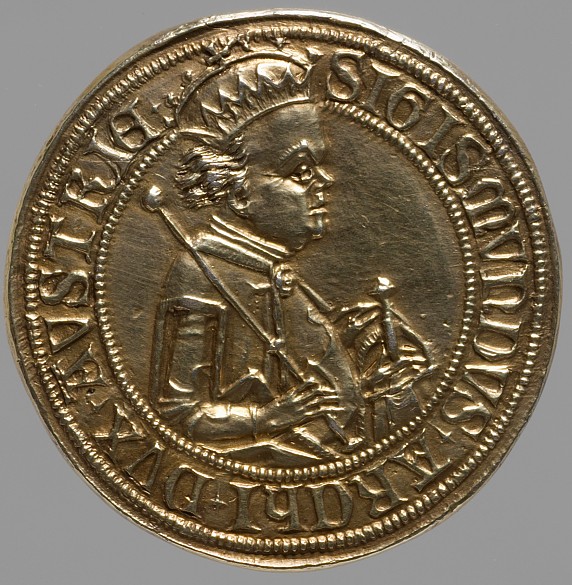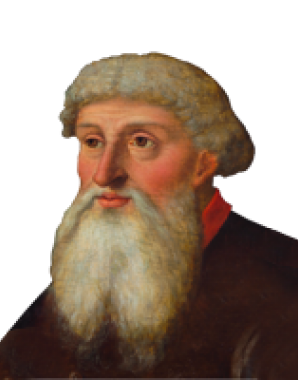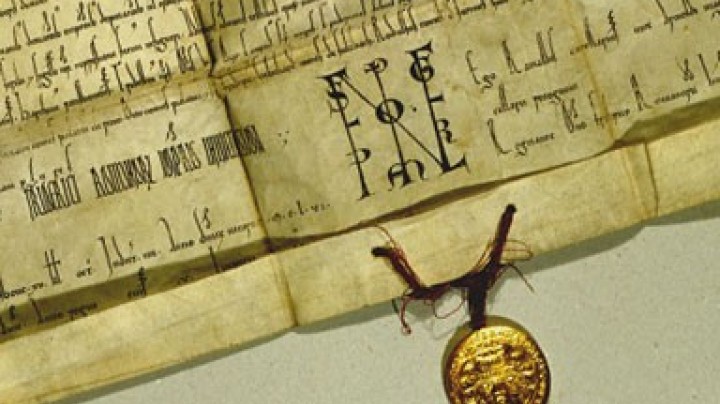Siegmund the Rich in Coin
Under Siegmund’s rule Tyrol experienced a period of prosperity during the late Middle Ages. At the beginning of his reign this Tyrolean Habsburg had to deal with the consequences of the conflicts between the Habsburg dynastic lines.
Siegmund was the only surviving child from the marriage of Duke Frederick IV of Tyrol and his second wife, Anna of Brunswick-Lüneburg. After the young boy lost his mother when he was five and his father when he was twelve, his older cousin Frederick V (later Emperor Frederick III) made him his ward and assumed regency over Tyrol. Siegmund grew up in Graz at Frederick’s court, where he came into contact with humanist thinking. One of his tutors was Frederick’s secretary, the Italian Enea Silvio Piccolomini, who would later become head of the Roman Catholic Church as Pope Pius II.
Frederick attempted to delay his ward’s coming of age and thus the handing over of the regency of Tyrol to Siegmund for as long as possible – in part because he had experienced the same situation himself as the ward of Siegmund’s father Frederick IV. When he announced to the Tyrolean diet in 1443 that the handing over of the regency would be postponed for three years, allegedly with the acquiescence of the sixteen-year-old Siegmund, tumultuous scenes ensued. This set the Tyrolean Estates, particularly the towns, on a collision course with Frederick.
Siegmund was finally able to accede to his inheritance in 1446, albeit in diminished form. Frederick had compensated his younger brother Albrecht VI, who had insisted on a share of sovereignty, with the Forelands. Siegmund thus only ruled over Tyrol and the domains ‘before the Arlberg’, which would later form the core of the Federal Province of Vorarlberg. Following Albrecht’s death in 1463 Siegmund also received the Forelands.
As ruler he attempted to extend his sovereign rights over ecclesiastical enclaves, particularly the domains of the bishop of Brixen. The areas under episcopal jurisdiction lay in a scattered complex of territories in southern and eastern Tyrol. The prince-bishop of Brixen was a prince of the empire, but his territories were subordinate to the protectorate of the counts of Tyrol. They thus occupied an ambiguous position in terms of imperial law and for this reason possessed great potential for conflict. In the bishop of Brixen, Nicholas of Cusa, Siegmund found a militant adversary.
In general Siegmund’s rule is seen as a positive epoch in Tyrolean history. The balance of power was consolidated and the economy prospered thanks to the flourishing trade with Italy via the Alpine passes, from which Siegmund profited enormously on account of the high duties and tolls exacted on the border. His epithet of ‘rich in coin’ derives from his reform of the coinage: as lord over the rich deposits of silver in the Tyrolean mining community of Schwaz he had at his disposal an almost inexhaustible source of wealth, and he initiated the striking of a new silver coin, the so-called ‘gulden-groschen’.















